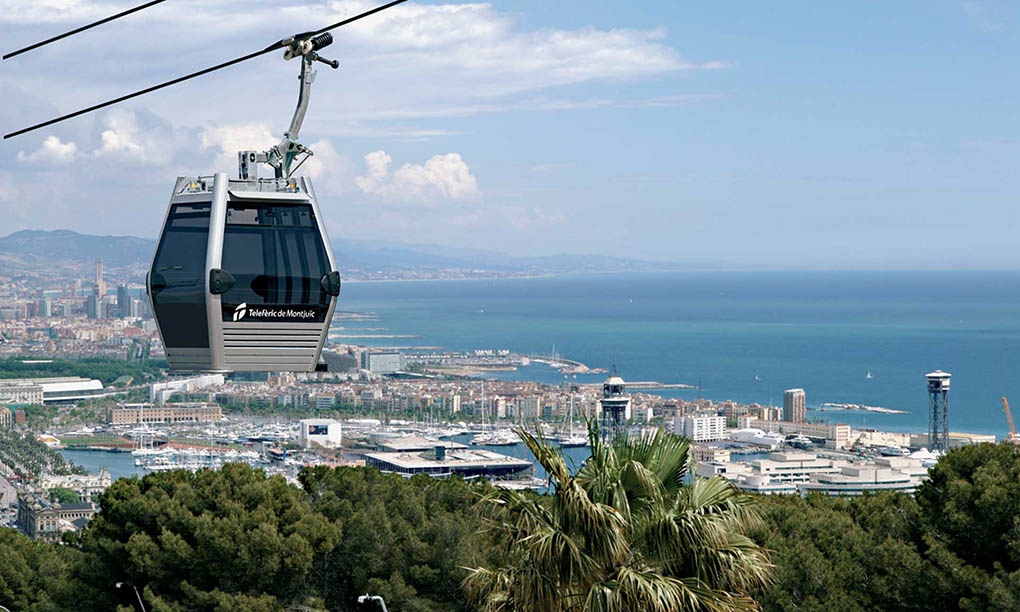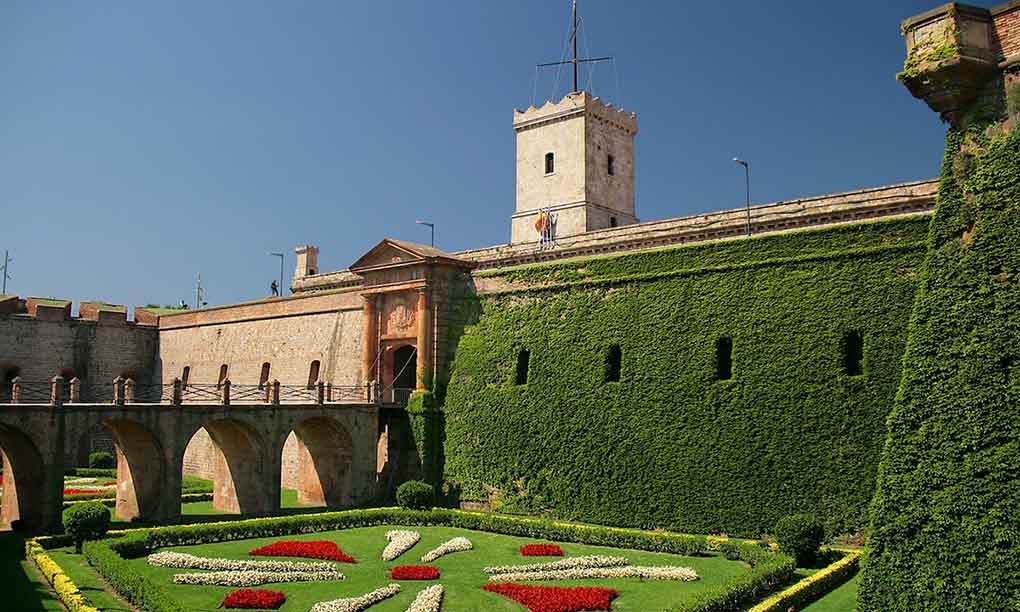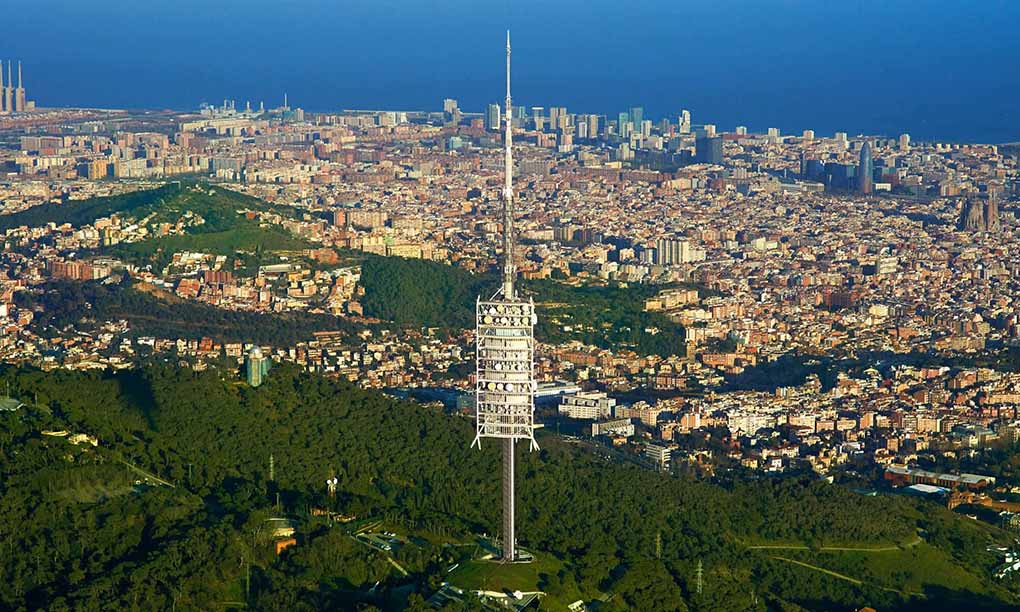As one of Spain’s most captivating cities, Barcelona attracts countless visitors with its unique architectural style, rich cultural heritage, and long history. However, if you’re looking to discover the beauty of this city from a different perspective, Montjuïc Mountain (Montjuïc) is undoubtedly a place you should not miss. Montjuïc Mountain is not only one of Barcelona’s most famous viewpoints but also a place brimming with history and natural charm, making it especially suitable for hiking enthusiasts.
1. Overview of Montjuïc Mountain
Montjuïc Mountain is located in the southwestern part of Barcelona, with an elevation of about 213 meters. It is a hill where nature and history intertwine, featuring vast green spaces, rich cultural sites, and stunning viewpoints. From the top of the mountain, you can overlook the entire city of Barcelona, its coastline, harbor, ancient buildings, modern skyscrapers, and even distant mountains, all laid out before your eyes.
Montjuïc holds significant historical importance. It was once a strategic military site during the Spanish Civil War and still retains some military relics. Today, it has become a comprehensive scenic area that combines natural beauty, cultural landmarks, and leisure activities.
2. Recommended Hiking Routes on Montjuïc Mountain
2.1. Preparing for the Hike
Hiking Montjuïc Mountain is a moderately challenging activity. Before you begin, make sure to wear comfortable shoes, bring water, and pack some snacks. While most of the trails are relatively flat, there are some steep sections, so preparing your stamina in advance will make your experience more enjoyable.
The best starting point is Plaza de España (Spain Square), which is a transportation hub with direct access via metro, bus, and other forms of transit. Around the square, you can visit iconic landmarks such as the Magic Fountain of Montjuïc and Barcelona’s ring road, making it a perfect starting point for your hike.
2.2. Route 1: From Spain Square to Montjuïc Mountain
Plaza de España is one of the transportation hubs of Barcelona, making it a convenient starting point for your hike. You can begin your ascent up the stairs on the west side of the square, and along the way, you’ll be surrounded by picturesque scenery, with lush greenery and historical landmarks. On this route, you’ll pass by the Fira de Barcelona (Barcelona Exhibition Center) and the National Art Museum of Catalonia (MNAC), two of the city’s most iconic cultural landmarks.
After about 15-20 minutes, you’ll reach Montjuïc Park, a lush park that’s ideal for a walk or rest. The park is home to many attractions such as the Joan Miró Gardens and the Palau Nacional (National Palace), along with the famous Magic Fountain of Montjuïc.

2.3. Route 2: Cable Car Journey
If you prefer a more relaxed way to explore, you can take the Montjuïc Cable Car (Teleférico de Montjuïc). The cable car departs from the port area and will take you to the mountain’s summit. It’s a popular tourist attraction, offering breathtaking aerial views of the cityscape.
However, if you’re up for a challenge, hiking will allow you to experience the area more intimately, especially as you trek along winding paths through dense forests, offering a sense of relaxation and connection with nature. Be sure to bring a camera because the views here are worth capturing.
3. Must-Visit Sights Along the Way
3.1. Montjuïc Castle (Castell de Montjuïc)
Montjuïc Castle, perched at the top of Montjuïc Mountain, is a historic site with a profound history. Originally built as a military fortress in the 16th century, its architectural design is heavily focused on defense and is filled with historical significance. The castle’s original purpose was to protect Barcelona from external invaders, but its role has evolved over the years. During the Spanish Civil War, Montjuïc Castle played a pivotal role and witnessed several important historical events. Today, it has been converted into a museum, attracting thousands of visitors each year.
Inside the castle, you can explore historical exhibits, including military equipment, photos, and artifacts related to the Spanish Civil War. The building itself is also a valuable piece of art, with its sturdy walls and unique watchtower design that transport visitors back in time to the wartime era.
From the highest point of the castle, you can enjoy a stunning 360-degree panoramic view of Barcelona. Here, you can see the entire city, including iconic landmarks like the Sagrada Família and Casa Batlló, all gleaming under the sun. You can also gaze out over the bustling Barcelona harbor, where white sails dot the azure Mediterranean, creating a mesmerizing sight. If you’re a photography enthusiast, this spot is perfect for capturing the beauty of the city.

3.2. Barcelona Olympic Stadium (Estadi Olímpic Lluís Companys)
Another iconic landmark is the Barcelona Olympic Stadium, located in the middle of Montjuïc Mountain. This stadium was the main venue for the 1992 Barcelona Olympics, marking a historic moment in the modern Olympic Games. Its exterior is strikingly modern, especially with its magnificent columns, simple structure, and the open space around it, making the stadium a prominent part of Barcelona’s cityscape.
The stadium itself is more than just a sports venue; it holds countless unforgettable memories of the Olympics. During the 1992 Games, thousands of spectators gathered to witness the magnificent opening ceremony and various important events. Today, the stadium is still used for sporting events and hosts large concerts, music festivals, and other cultural events. Though some areas of the stadium are not open to the public, you can still visit the exterior and enjoy its impressive architecture and surrounding scenery.
3.3. Palau Nacional (National Palace)
Palau Nacional, located on Montjuïc Mountain, is one of the most important museums in Barcelona and one of the city’s most iconic buildings. The palace’s architectural style blends Spanish Renaissance and Baroque influences, creating an imposing and grand appearance. It was originally built for the 1929 International Exposition in Barcelona to showcase Spain’s cultural and artistic achievements at the time.
The palace itself is a work of art, with its intricate façade, ornate sculptures, and majestic dome. Standing in front of the plaza, you can enjoy the beautiful panoramic view of Barcelona. Particularly during sunset, the building shines in a golden light, creating an unforgettable sight.
Inside the palace is the National Art Museum of Catalonia (MNAC), home to an extensive collection of Catalan art, history, and culture. The museum exhibits works from the Middle Ages, the Renaissance, and modern art. One of the highlights is the Romanesque murals, which are some of the most precious artworks in Spain, preserved nearly intact.
4. Stunning Panoramic View from the Top
The most thrilling part of reaching the top of Montjuïc is the panoramic view. From here, you can admire the entire city of Barcelona with a 360-degree view, witnessing the city’s stunning skyline, from towering skyscrapers and ancient Gothic buildings to the bustling harbor.
On clear days, you’ll not only see the Mediterranean’s crystal-clear waters but also the sparkling surface of the sea, dotted with ships. To the west, you’ll see the vibrant Barcelona harbor, a busy commercial port where a variety of ships sail across the waters. The modern buildings around the harbor blend perfectly with the natural beauty of the coastline, creating a beautiful urban landscape.
At the mountain’s summit, you can also enjoy a distant view of Collserola and the Tamarrons mountains, surrounded by nature, adding depth and tranquility to the city. These mountains offer a striking contrast to Barcelona’s modern architecture, showcasing the harmonious blend of nature and urbanization.
Whether during the day or at sunset, the view from Montjuïc is simply mesmerizing. During the day, you can take in the lively and energetic atmosphere of the city, while at sunset, the golden glow of the setting sun on the city’s buildings and the sea creates an ethereal scene.

5. Hiking Tips
5.1. Clothing and Gear Recommendations
Since the trails on Montjuïc Mountain can be somewhat challenging, it’s advisable to wear comfortable hiking shoes or sports footwear. If it’s a warm day, don’t forget to bring a hat and sunscreen, as much of the route is exposed. Also, carry a bottle of water to stay hydrated and bring some snacks to refuel during breaks.
5.2. Route Timing
Starting from Plaza de España, it will take around 1 to 1.5 hours to reach the castle at the top. If you plan to visit the sights along the way, allow extra time, as the entire journey could take 3-4 hours. The cable car ride takes about 10-15 minutes, making it ideal for those looking for a more relaxed experience.
5.3. Best Season
Barcelona experiences distinct seasons, and spring and autumn are the best times for hiking. During these seasons, the weather is mild, not too hot or cold. Although summer can be very hot, you can still choose to hike early in the morning or late in the evening to avoid the heat.
Hiking Montjuïc Mountain is not only a physical challenge but also a chance to intimately experience the city’s landscapes, historical landmarks, and natural beauty. From high up, you’ll enjoy a different view of Barcelona, one that’s quieter and more connected to nature. Whether you’re a history buff, a nature lover, or simply a travel enthusiast, Montjuïc Mountain will leave you with unforgettable memories.
If you’re visiting Barcelona, take a day to experience the breathtaking views on this mountain and discover the most beautiful cityscape the city has to offer.
